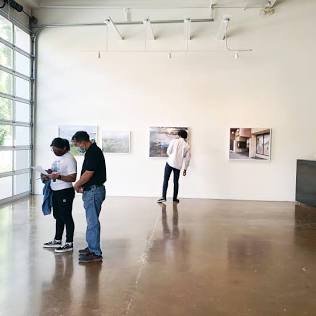Zeitgeist Gallery’s Final Act – How One Institution Shaped Wedgewood‑Houston’s Soul
When Zeitgeist Gallery opens its doors for the final time at the close of 2025, the reverberations will be felt far beyond the impact on its loyal visitors—it will disrupt the very identity of Nashville’s Wedgewood‑Houston neighborhood.
From Pioneering Vision to Cultural Anchor
Established in 1994 by Janice Zeitlin in Nashville’s Cummins Station, Zeitgeist quickly earned a reputation as a restless incubator for new artistic voices, and a daring sanctuary for established creators searching for fresh terrain . In 2013, under director Lain York, the gallery moved to 516 Hagan Street within Wedgewood‑Houston, becoming a cornerstone of the neighborhood’s First Saturday Art Crawl and symbolizing the shift from music-focused Nashville to a broader cultural ecosystem .
A Canvas for Community History and Memory
In June 2024, Zeitgeist hosted The Key Show, a retrospective exhibition featuring over 25 artists who once held keys to studios in the former May Hosiery Mill and Houston Station buildings . As co‑curators Lain York and Janet Decker Yanez noted, the show was an intentional tribute to the ragtag network of creatives who first animated Wedgewood‑Houston in the late 1990s. It served as a reunion and an assertion: the character and memory of WeHo as an arts incubator cannot be erased by development alone
Shaping a Neighborhood’s Narrative
Wedgewood‑Houston’s rise—from underused industrial lots to a thriving “makerhood”—owes much to Zeitgeist’s consistency and credibility. As developer and planner leaders observed, the raw architecture and artist-driven activity in WeHo offered fertile ground for a new kind of urban vitality—one rooted in creative production, grassroots collaboration, and adaptive reuse .
David Lusk Gallery’s decision to locate nearby in 2014, at Zeitgeist’s invitation, further solidified the gallery cluster’s influence on the area’s artistic gravitas.
A Creative Ecosystem Under Threat
Zeitgeist’s impending closure—after 32 years in operation—raises a troubling question: what becomes of an arts district when its institutions are priced out of the very neighborhood they helped define? The gallery once anchored Wedgewood‑Houston’s identity; without policies or support to sustain its existence, the creative community risks displacement even as the area flourishes in other ways.
This tension came up repeatedly in The Key Show. As one contributor lamented: “This neighborhood would not be what it is today without these … creative individuals,” and the exhibition was meant to “keep that story alive and honor the artists who made Wedgewood‑Houston”.
Zeitgeist’s Legacy: Fragile, Fierce, and Vital
Zeitgeist’s legacy is measured not in sales or social media reach, but in the insight and courage it offered Nashville’s artists—allowing them to take chances and imagine new possibilities. It built a bridge between underground collectives and mainstream collectors, and helped introduce the city to non‑musical modes of creativity.
Now, Nashville faces a choice: let Zeitgeist be remembered fondly in print, or honor its spirit by supporting the next generation of independent galleries, studios, and creative spaces.
As Nashville Scene observed, Zeitgeist’s exhibitions “always required viewing”—and helped define what WeHo 2.0 could be .
‘A Call to Action for Civic and Cultural Leaders
Zeitgeist’s coming closure should serve as Nashville’s moment of reckoning. City officials, cultural foundations, developers, and residents must ask: how will we sustain the creative infrastructure that gives our communities soul?
If the city is to remain more than a provincial music capital—if it wants theaters, galleries, studios to thrive—then the Zeitgeist model must be protected, amplified, not dissolved.
Because without intentional support, Nashville’s next cultural revolution may lack the very spaces that helped launch the last one.

